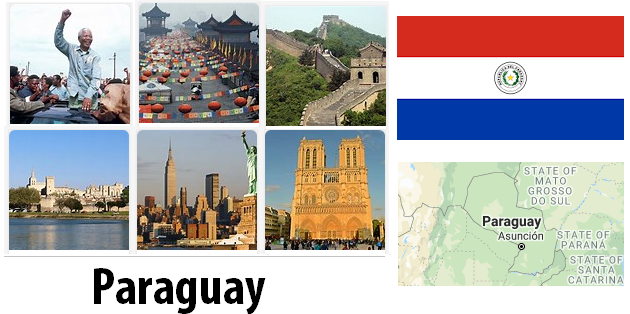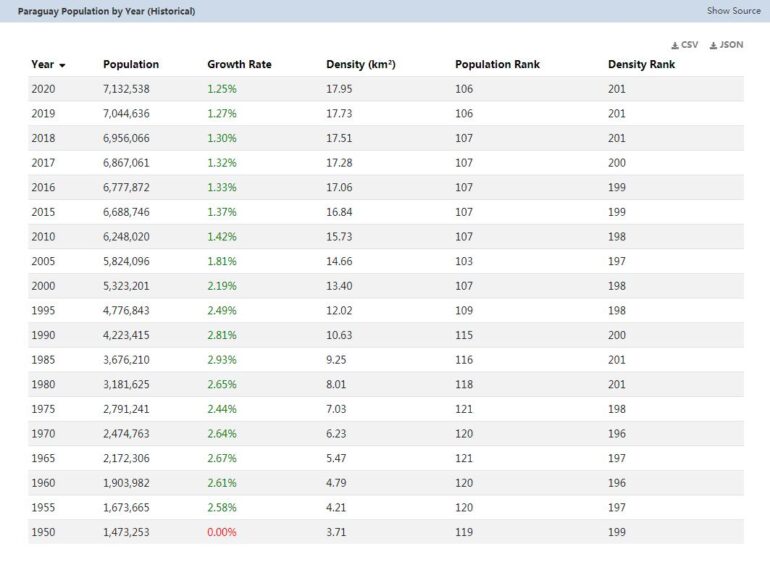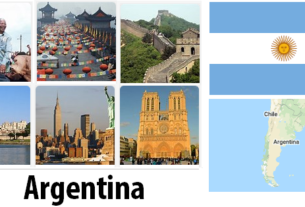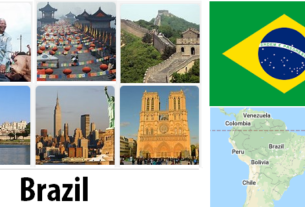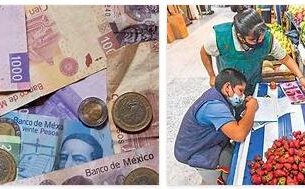The first Spanish expedition, commanded by Aleixo Garcia, landed in Paraguay in 1521. The first approaches with the Indians were disastrous; Garcia was killed and the expedition left the country.
In 1536 another Spaniard arrived in the territory, Juan de Ayolas; here he built the fort called “Corpus Christi”. Just his victory over the Lambarè Indians on Ascension Day gave the name to that center which has since been called Asuncion.
Then Ayolas went up to Paraguay and as he was about to cross the Andes he was killed. The command was assumed by his lieutenant, Martinez de Irala who organized the Indians into “encomiendas” and at the head of each of them put a Spanish “encomendero”. Of course these early settlements, far from peaceful, cost a significant bloodshed.
The knowledge of the territory remained for a few years limited to the river routes and the grouping of Asuncion. See Countryaah for population and country facts about Paraguay.
Only after 1600, with the arrival of the Jesuit missionaries, was it possible to start the work of civilization and the expansion of the geographical knowledge of the country.
If the Spanish domination (which lasted until 1811) was not cruel here it was thanks to the Jesuits who managed to convert the majority of the Indians.
In their mission, however, the Jesuits encountered a strong obstacle in the wealthy Spanish colonists, who exploited the Indians as slaves. These settlers, who opposed the Fathers because they preached justice and equality, turned to the Spanish Court to remove the missionaries from the colony. And in fact, on February 27, 1767, Charles III, king of Spain, ordered all the Jesuits to abandon the overseas territories.
It was a serious political mistake as the departure of the beloved Fathers increased the hatred of the lndios towards the oppressors.
Many years passed before the fight against the rulers broke out in Paraguay; it was not until 1810 that the people claimed independence. Bernardo de Velasco, the then Spanish governor tried to stall by declaring himself ready to argue, but the Paraguayans, aware of his double game, rebelled; on May 14, 1811 a group of soldiers, led by PJ Caballero, took possession of the Government Palace of Asuncion and took Velasco prisoner.
A few months later an Assembly proclaimed independence.
On October 12, 1813 a General Congress gave the government two consuls: Fulgencio Yegros and Jose Gaspar Rodriguez France that they would remain in office for a year.
However, since the Paraguayans were not yet able to govern themselves democratically, the government of the consuls did not last long. J.
G. Francia managed to get himself elected president alone. Under him, who pompously called himself “El Supremo Dictator”, a tyrannical and ferocious regime was established in the country. He had all the opponents shot; prohibited Paraguayans from leaving the country and foreigners from entering; then he stopped all trade with other states. He also persecuted the Catholic religion, dismissed the Bishop of Asuncion, then absolutely prohibited processions and any manifestation of the cult.
Despite everything, in 1817 he was re-elected to perpetual dictator and until his death, September 20, 1840, Paraguay continued his arduous isolationist existence.
At the death of JGRFrance provisional government councils were formed and Carlos Antonio Lopez, nephew of the dictator, was elected president at the third. He was, however, a wise man and just loved by everyone. He managed in a few years to give Paraguay a place in the civilized world.
Upon his death in 1862, his son Marshal Francisco Solano Lopez was succeeded. Under his presidency, a long conflict broke out with the neighboring states of Uruguay, Brazil and Argentina over a controversy regarding the Rio de la Plata territories. From 1865 to 1870 the Paraguayan army, albeit inferior, managed to keep up with the numerous opposing armies. In the end, however, he had to give in. The losses were immense with over 500,000 dead. The country was almost entirely destroyed. Lopez died in battle on March 1, 1870. Peace was signed on June 20 of the same year, a triunvirate was appointed in August, a new Constitution was approved in November and Cyril Antonio Rivarola was elected president.
Slowly the Paraguayan people devoted themselves to reconstruction; thus spent more than 50 years in which he managed to recover. Even the 1st World War passed without consequences.
In the summer of 1932 a new conflict broke out against Bolivia for possession of the Chaco. The fighting followed for three years and when the war ended (1934) 75% of the disputed territory was attributed to Paraguay.
On January 21, 1936, renewed the armistice, Paraguay and Bolivia demobilized the army, repatriated the prisoners and re-established diplomatic relations.
In February 1936 Colonel Rafael Franco, considered a hero of the Chaco war, occupied Asuncion, seized power, established a fascist dictatorship: thus suppressed the parties, the freedom of the press and declared that his main objective was to proclaim a Constitution that would lead to an “effective democracy of peasants and workers”. But he failed to consolidate his regime and in August 1937 he was overthrown by a coup.
Felix Paiva was elected provisional president who promised to reinstate the constitution in place in 1870.
The border situation with Bolivia returned to cause concern in 1938 but on July 21 the definitive peace treaty was finally signed and since then the slow but continuous process of reconstruction began.
